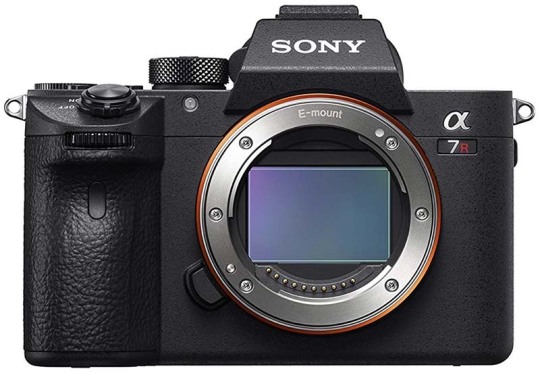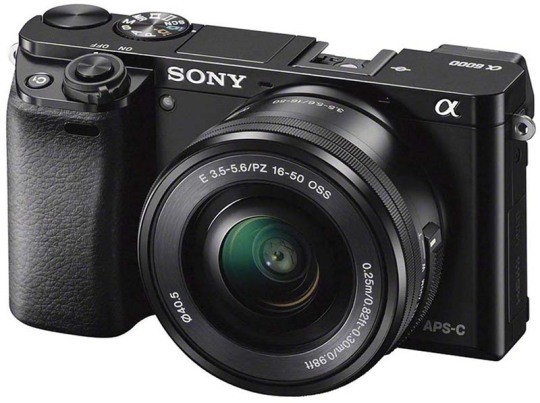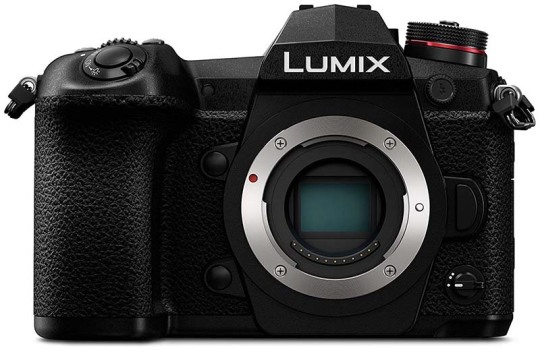Don't wanna be here? Send us removal request.
Text
5 Top Mirrorless Camera
The mirrorless revolution is in full swing. These impressive digital cameras pack large image sensors into compact bodies, offering some of the best image and video quality on the market with less bulk than a DSLR. As the lens options continue to expand, going mirrorless makes more sense now than ever before. Below we break down the best mirrorless-interchangeable lens systems of 2018, from full-frame models for professionals to leading budget options. Nearly all of the big brands are represented, including Sony, Panasonic, Olympus, and Fujifilm (Nikon's much-anticipated Z series is coming soon). For more background information, see our mirrorless camera comparison table and buying advice below the picks.

1. Sony Alpha a7R III ($2,998)
Sony has owned the full-frame mirrorless market for years, and the Alpha a7R III is at the top of the heap for 2018. This sleek little camera pretty much does it all: you get 42.4 megapixels of resolution, superb autofocus and tracking, in-body image stabilization, 4K video, and weather sealing (we could go on and on). Compared to the older a7R II, Sony doubled the burst rate up to 10 fps, added touch functionality on the rear LCD, and changed the battery type, which made a world of difference. For everything from still photography to videos, we think it's the best all-around mirrorless camera on the market. What are the shortcomings of the Sony a7R III? At around $3,000 for the body, it's an expensive set-up reserved for professionals and enthusiasts with big budgets (and Sony GM lenses aren't exactly cheap either). For those who want to spend less, Sony released the a7 III (no "R") below, which offers 24.2 megapixels of resolution but many of the same features as the a7R III for about $1,000 less. And it's worth noting that Sony isn't alone anymore: Nikon just released its much-anticipated Z7 and Z6 full-frame mirrorless cameras. All new systems have challenges with technology and limited lens selection, but Nikon surely will be a force to be reckoned with.

2. Fujifilm X-T2 ($1,099)
We'll start by saying that we really like Fujifilm's mirrorless cameras. They are extremely well built, have the truest color rendition of any brand, and offer superb image quality for uses like travel and portraits in a compact package. It's true that Sony wins out in sensor size and Panasonic is superior in video, but you'll be hard-pressed to find a better mirrorless camera for stills than the Fujifilm X-T2. And the cherry on top: Fujinon lenses may not be as numerous as Micro Four Thirds or Sony E-mount, but the optical quality can't be beat. It's worth noting that Fujifilm has come a long way in categories like autofocus and video. We remember back when the original X-T1 was released: the camera had challenges locking in on subjects (even non-moving ones), and video was downright poor. The X-T2 still isn't a standout in these areas, but it's at least capable and competitive. In comparing the X-T2 to the rest of Fujifilm's current lineup, it's less rangefinder-like than the X-Pro2 but beats it out in most other features. And we prefer the X-T2 over the newer X-H1 below: it's cheaper yet boasts the same sensor, autofocus, and weather sealing. It's true that the X-H1 has a larger grip and in-camera image stabilization, but we like the value of the X-T2. Keep an eye out for the X-T3, which is rumored to be in the works for fall of 2018.

3. Sony Alpha a6000 ($548 with 16-50mm lens)
The Sony a6000 is getting a little long in the tooth-it has been replaced by the newer a6300 and a6500 below-but the camera currently is a great value at around $550 with a kit lens. Most importantly, you get a 24.3-megapixel APS-C image sensor, fast shooting at up to 11 frames per second, 1080p video, and built-in Wi-Fi and NFC. With a weight of just over 12 ounces and a very approachable price tag, there is a lot to like about the Sony a6000. What do you sacrifice by going with a past-generation model like the a6000? The camera lacks modern features like 4K video, in-body image stabilization, and weather resistance. It's also true that the 16-50mm kit lens is decent but won't make your photos really pop, so you may want to add a specialty zoom or prime for better results. But we can't overlook the value: the a6000 is roughly one-third the cost of the flashy Olympus OM-D E-M1 Mark II below, but still does a pretty darn good job in terms of performance. For those really looking to save, the Sony a5100 is slightly less capable than the a6000 (it has no electronic viewfinder, for example) but is only $450 with a kit lens.

4. Panasonic Lumix DC-G9 ($1,498)
Until the release of the Panasonic G9, the GH5 below was our top-rated Micro Four Thirds camera. But then came the G9 and the script was flipped. While the GH5 prioritizes video and addresses stills later, the G9 does just the opposite, making it a more versatile and practical camera for most people. The G9 still records 4K video at 60p, but it also shoots stills at 20 fps while the GH5 only does 12 fps. Another benefit of the G9 is the new USB port that allows you to charge the camera on the go or while in use, helping to ensure that you won't run out of battery during those longer sessions. And given the $200 difference in price and lower weight, the G9 is our top Micro Four Thirds camera for 2018. For those hesitant to buy a Micro Four Thirds camera based on the smaller sensor (more on that in our buying advice below), Panasonic did include a high resolution mode on the G9. The feature is intended mostly for landscape and architecture photographers, and it combines 8 photographs into a single, 80-megapixel file. While this can be highly beneficial for static subjects, those interested in shooting movement may find this feature obsolete. Either way, it's a nice touch to a very well-rounded mirrorless camera.

5. Olympus OM-D E-M10 Mark III ($699 with 14-42mm lens)
Olympus has been very competitive in the mirrorless market for years, but consumers have felt the squeeze when considering high-end models like the E-M1 Mark II and E-M5 Mark II. Enter the E-M10 Mark III, a more affordable option that offers Olympus's signature image and video quality for around $700 with a kit lens. New to the Mark III is 4K video, superior image stabilization, more autofocus points, and a more approachable menu system and user experience overall. Factor in the vast collection of Micro Four Thirds lenses, and you have a highly versatile travel camera with a small form factor. We hemmed and hawed about whether to include the Mark III or Mark II here (newer isn't always better when you take price into consideration). The older model is about $200 cheaper with the same kit lens, and unless you frequently shoot video, none of the upgrades are particularly groundbreaking. But we do like the sum of the changes, which give the new E-M10 Mark III the edge in the end.
1 note
·
View note